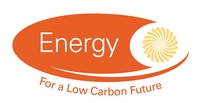Building Supply Chain for Mass Refurbishment of Houses: Policy & Regulation: Technology opportunity report (WP6 D3)
Abstract:
This project looked at designing a supply chain solution to improve the energy efficiency of the vast majority of the 26 million UK homes which will still be in use by 2050.It looked to identify ways in which the refurbishment and retrofitting of existing residential properties can be accelerated by industrialising the processes of design, supply and implementation, while stimulating demand from householders by exploiting additional opportunities that come with extensive building refurbishment.The project developed a top-to-bottom process, using a method of analysing the most cost-effective package of measures suitable for a particular property, through to how these will be installed with the minimum disruption to the householder. This includes identifying the skills required of the people on the ground as well as the optimum material distribution networks to supply them with exactly what is required and when.
The purpose of this work package task has been to investigate three particular concepts;
- “To define within the context of the OTEoEH project what an acceptable level of intervention will be for the five main housing types selected for scenario testing.”
- “To undertake a Technology development activity to identify technical opportunities that are capable of reducing identified risks of refurbishment to acceptable levels as defined above.”
- “To include in the series of workshops, special attention to skills, culture and systems and processes issues within the construction industry.”
- New concepts and ideas
- Adaptations to ladders, scaffolding and towers to produce tailored safe efficient working platform solutions, for example for the fixing of insulation, cladding or drylining.
- The use of attachments for cherry pickers etc. to aid handling of windows (especially triple glazed), cladding, drylining and insulation.
- The use of laser scanning and CNC cutting to prepare materials offsite, particularly internal wall insulation
- The prefabrication of roof units for loft conversions to minimise time on site
- The use of drones to photograph/video as part of the survey of the property – particularly for difficult to see areas that would require a surveyor to work at height eg roofs
- Skills and Culture
- The poly-competent team will need to be competent contractor. They will have to have embedded a safety culture and have received training in generic good safety practices and risk identification. This will be the primary means by which risk will be managed and will include reducing risks from slips, trips, falls and handling.
Publication Year:
2013
Publisher:
ETI
Author(s):
Bottone, D. and Pope, W.
Energy Category
Language:
English
File Type:
application/pdf
File Size:
4069107 B
Rights:
Energy Technologies Institute Open Licence for Materials
Rights Overview:
The Energy Technologies Institute is making this document available to use under the Energy Technologies Institute Open Licence for Materials. Please refer to the Energy Technologies Institute website for the terms and conditions of this licence. The Information is licensed "as is" and the Energy Technologies Institute excludes all representations, warranties, obligations and liabilities in relation to the Information to the maximum extent permitted by law. The Energy Technologies Institute is not liable for any errors or omissions in the Information and shall not be liable for any loss, injury or damage of any kind caused by its use. This exclusion of liability includes, but is not limited to, any direct, indirect, special, incidental, consequential, punitive, or exemplary damages in each case such as loss of revenue, data, anticipated profits, and lost business. The Energy Technologies Institute does not guarantee the continued supply of the Information. Notwithstanding any statement to the contrary contained on the face of this document, the Energy Technologies Institute confirms that it has the right to publish this document.
Further information:
N/A
Region:
United Kingdom
Related Dataset(s):
No related datasets
Related Project(s):
Related Publications(s):
Building Supply Chain for Mass Refurbishment of Houses : Mass implementation - DfX Workshop Report
Building Supply Chain for Mass Refurbishment of Houses : Mass implementation plan (WP 3 D4)
Building Supply Chain for Mass Refurbishment of Houses: Customer Value - Defining the Customer
Building Supply Chain for Mass Refurbishment of Houses: Customer Value - Synthesis Report (WP5 D5)



